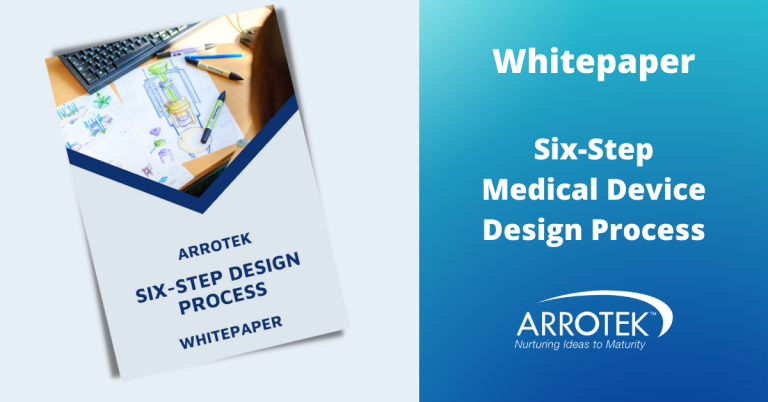At Arrotek, we continuously work to improve how we operate to enhance the quality of the services that we offer. This includes using Lean Manufacturing methodologies to optimise production processes for our manufacturing customers, but we take a similar approach to other parts of our business, including medical device product design. Specifically, we use Lean Six Sigma to optimize and continuously improve our design and development processes.
Lean Six Sigma uses the principles, methods, and tools of Lean Manufacturing and Six Sigma to:
- Improve business operations
- Streamline product development processes
- Optimize product quality
Lean Six Sigma combines the Lean concept of eliminating waste with Six Sigma techniques (including DMAIC – Define, Measure, Analyze, Improve, and Control) to eliminate defects and variations.
The aims of our Lean Six Sigma adoption at Arrotek include maximizing efficiency, reducing waste, and controlling variation in the medical device design and development process.
Core Components of Lean Six Sigma at Arrotek
- Process and methodology – to ensure the identification of root causes and the implementation of solutions.
- Tools and techniques – that we use for root cause identification and solution implementation.
- Mindset and culture – using processes and data to ensure continuous improvement.
Examples of How We Apply Lean Six Sigma Methodologies
Customer, Clinician, and Patient Focus
We use an adapted customer-centric approach from Six Sigma as well as Voice of the Customer methodologies to create a focus on the three main target audiences for the products we design:
- Our clients, including large medical device corporations, medical device start-ups, medical professionals, and entrepreneurs.
- Clinicians, i.e., the healthcare professionals who will be using our clients’ new medical device products to carry out medical procedures.
- Patients, with a specific emphasis on ensuring positive outcomes and the highest standards of quality and safety.
Eliminating Waste
We utilize Lean Manufacturing methodologies to eliminate waste in our manufacturing processes, and we use similar principles in product design and development. Our value stream mapping approach classifies design steps that are value-adding or non-value-adding to eliminate wasted resources, time, and materials.
Process Flow Improvement
Inefficiencies and bottlenecks in our medical device design process are identified and addressed to continuously improve process flow.
We also utilize a pull system approach to ensure subject matter experts and other resources are pulled into projects only when they are needed, rather than those resources being pushed through the entire process. Our pull system approach helps to eliminate inefficiencies, overproduction, and waste.
Reducing Variation and Enhancing Quality
We continuously assess and analyze the influence of different variables on design so we can optimize our processes and, ultimately, the quality of the products we develop for our clients. We also use statistical methods to monitor and control the design process to ensure variations are minimized.
Iterative Development and Continuous Improvement
Rapid prototyping is a core part of our design process as it allows for continuous feedback and iterative improvements.
Using Lean Six Sigma to Optimise the Medical Device Design Process
At Arrotek, we can apply Lean Six Sigma in medical device product design as our team has a comprehensive understanding of both Lean and Six Sigma methodologies. We also take an innovative and agile approach to project delivery, with a willingness across all departments and business units to embrace a culture of continuous improvement.
The tools and techniques that we use have been adapted to meet the specific needs of the medical device industry. They significantly improve efficiency, reduce costs, and enhance the quality and effectiveness of the products we design for clients.





